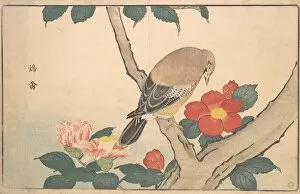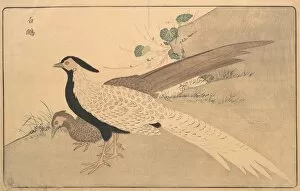254 378 Cm Collection
"254 378 cm: Exploring the Artistic Treasures of Edo Period Japan" Step back in time to the Ō Edo period, a flourishing era of art and culture in Japan
All Professionally Made to Order for Quick Shipping
"254 378 cm: Exploring the Artistic Treasures of Edo Period Japan" Step back in time to the Ō Edo period, a flourishing era of art and culture in Japan. Amongst the numerous masterpieces created during this time, one stands out - "254 378 cm". This captivating artwork takes us on a journey through various themes and styles that defined this remarkable period. One such piece is "Camellias Bird", a stunning woodblock print from 1789. Its intricate details and vibrant colors showcase the skillful craftsmanship of Japanese artists during this era. Similarly, "Chinese Oriole Peonies" captures the essence of nature with its delicate depiction of birds amidst blooming flowers. The influence of Chinese art can also be seen in works like "Bai xian" and "Zhu ji", both polychrome woodblock prints from 1615-1868. These pieces reflect the cultural exchange between China and Japan, showcasing their shared artistic traditions. Not limited to nature-inspired artworks, Edo-period artists also depicted scenes from everyday life. One such example is "Group Three Chinese Men Cliff Sea", which portrays three men engaged in conversation against a backdrop of majestic cliffs and crashing waves. Birds were another popular subject during this time, as seen in pieces like "Paradise Fly-catcher" and "Pied Wagtail". These prints capture the gracefulness and beauty of these creatures while showcasing the mastery of woodblock printing techniques. In addition to animals, human figures were often portrayed as well. The enigmatic figure depicted in "Picture man Nankin" invites viewers to ponder his story within an intriguing narrative context. Lastly, we have "Gray Thrush", yet another masterpiece from 1615-1868 that showcases not only technical excellence but also emotional depth through its portrayal of a solitary bird perched on a branch.












